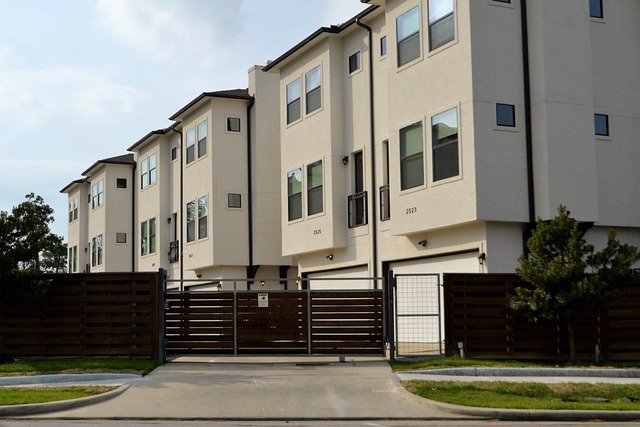Container Homes in Kenya: The Stylish & Affordable Housing Revolution
In recent years, Kenya has witnessed a remarkable transformation in its housing landscape with the emergence of container homes. These innovative dwellings, fashioned from repurposed shipping containers, are quickly gaining popularity among urban dwellers and property developers alike. Combining sustainability, affordability, and modern aesthetics, container homes are addressing Kenya's housing challenges while offering stylish living spaces that challenge traditional construction norms. This architectural revolution is reshaping how Kenyans think about homeownership and design.

Why Container Homes Are Booming in Kenya
The rapid rise of container homes in Kenya can be attributed to several compelling factors. First, the persistent housing deficit in urban centers has created an urgent need for alternative housing solutions. Traditional brick-and-mortar construction often comes with prohibitive costs and lengthy completion timelines, making container homes an attractive alternative.
Additionally, sustainability concerns are driving many environmentally conscious Kenyans toward repurposed shipping containers. By upcycling these steel structures, homeowners contribute to reducing construction waste while giving new life to materials that might otherwise be discarded. This eco-friendly approach resonates strongly with Kenya’s growing environmentally aware population.
The speed of construction also plays a significant role in their popularity. While conventional homes may take years to complete, container homes can be ready for occupation in as little as three to six months. For young professionals and small families looking to move into their own spaces quickly, this accelerated timeline presents a major advantage in Kenya’s competitive housing market.
How Much Do Container Houses Cost in Kenya?
The financial accessibility of container homes represents one of their most appealing attributes in the Kenyan market. The cost varies depending on size, design complexity, and level of finishing, but generally remains lower than traditional construction methods.
A basic 20-foot container home with minimal modifications can start from as low as KSh 600,000, while a more sophisticated 40-foot container with premium finishes might range from KSh 1.5 million to KSh 3 million. Multi-container designs with high-end amenities can exceed KSh 5 million, still representing significant savings compared to conventional homes of similar quality.
| Container Size | Basic Finish (KSh) | Mid-Range Finish (KSh) | Luxury Finish (KSh) |
|---|---|---|---|
| 20-foot single | 600,000-800,000 | 800,000-1,500,000 | 1,500,000-2,500,000 |
| 40-foot single | 900,000-1,500,000 | 1,500,000-2,500,000 | 2,500,000-4,000,000 |
| Multi-container | 2,000,000-3,500,000 | 3,500,000-5,000,000 | 5,000,000+ |
Prices, rates, or cost estimates mentioned in this article are based on the latest available information but may change over time. Independent research is advised before making financial decisions.
Additional costs to consider include land acquisition, foundation work, plumbing, electrical systems, and interior finishes. Despite these considerations, the overall investment typically remains 20-40% lower than conventional construction, making homeownership accessible to a broader segment of Kenya’s population.
Best Locations for Container Homes in Kenya
Container homes are appearing across various Kenyan landscapes, but certain areas have emerged as particularly suitable for these innovative structures. Suburban areas surrounding Nairobi, such as Kitengela, Athi River, and parts of Kajiado, offer affordable land prices while maintaining proximity to the capital’s amenities and employment opportunities.
Coastal regions like Diani and Kilifi have also embraced container architecture, where the industrial aesthetic of shipping containers complements the relaxed beach lifestyle. Here, container homes often serve as vacation properties or rental investments in the tourism sector.
Rural settings present unique advantages for container homeowners seeking larger plots at lower costs. Areas like Nanyuki, parts of Laikipia, and the outskirts of Nakuru provide breathtaking natural backdrops for container living while allowing owners to invest more in customization rather than land acquisition.
Climate considerations do influence location choices, as steel containers can absorb heat in hot regions. However, proper insulation, strategic orientation, and shade features can mitigate temperature concerns, making container homes viable throughout Kenya’s diverse geographic zones.
Customization & Design Ideas
The versatility of container architecture allows for remarkable creativity in design and functionality. Kenyan architects and homeowners are pushing boundaries with innovative approaches to these steel structures. External cladding with wood, stone, or composite materials can transform the industrial appearance into sophisticated facades that blend with natural surroundings or create ultra-modern statements.
Interior designs frequently emphasize space optimization through multi-functional furniture, clever storage solutions, and open-plan layouts. Large glass installations—sliding doors, floor-to-ceiling windows, and skylights—are popular additions that enhance natural lighting while creating a sense of expanded space within the container’s confines.
Multi-container configurations offer endless possibilities, from single-story sprawling designs to vertical stacking for multi-level homes. Some Kenyan designers incorporate rooftop gardens and outdoor living spaces, effectively increasing usable square footage while creating sustainable, green environments that counterbalance the container’s industrial origins.
Local materials and techniques are increasingly integrated into container home designs, with handcrafted furniture, traditional textiles, and indigenous art creating uniquely Kenyan interpretations of this global architectural trend.
The Future of Housing in Kenya
Container homes represent more than just an architectural fad in Kenya; they signal a fundamental shift in housing approaches that may reshape the country’s built environment. As urban centers continue expanding and housing demand intensifies, these adaptable structures offer a scalable solution that addresses both affordability and sustainability challenges.
Government policies are gradually adapting to accommodate alternative construction methods, with some counties developing specific building codes for container structures. This regulatory evolution could further mainstream container housing and potentially lead to larger-scale developments, including container apartment complexes and commercial spaces.
The growing ecosystem of container home specialists—from architects to fabricators and interior designers—indicates a maturing industry that will likely drive further innovation and cost efficiencies. As more Kenyans embrace these unconventional homes, the stigma once associated with container living continues to dissipate, replaced by appreciation for their practical and aesthetic benefits.
Looking ahead, container architecture may play a significant role in Kenya’s response to climate change challenges through sustainable building practices, while simultaneously addressing the critical need for affordable housing in one of Africa’s fastest-growing economies.




